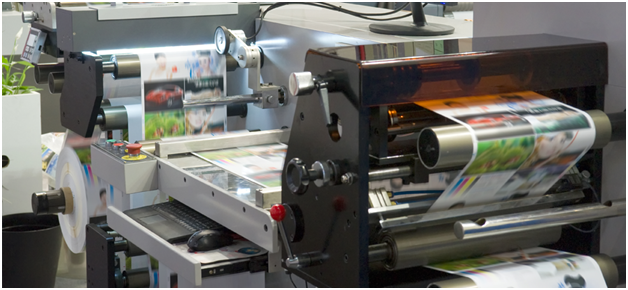Top Industries That Use litho printing Today
Top Industries That Use litho printing Today
Blog Article
A Comprehensive Overview to Understanding Litho Printing Methods
The world of litho printing, a strategy originating from the late 18th century, is a fascinating blend of background, scientific research, innovation and art. This detailed overview will certainly unravel the complexities of this printing approach, from the structure of litho inks to the difficulties dealt with in modern-day applications. As we venture right into the intricacies of lithography, the relevance of automation and sustainability in guaranteeing its future significance becomes progressively clear. Keep with us as we journey into the fascinating realm of litho printing.
The Historical Evolution of Litho Printing
The historical trajectory of litho printing, a crucial advancement in the realm of interaction, is a captivating tale of human resourcefulness. The process evolved with the arrival of the rotating press, which substantially increased performance. Each stage of litho printing's advancement showcases mankind's ruthless pursuit of efficiency and top quality in visual communication.
Decoding the Scientific Research Behind Litho Printing Inks
Progressing in the expedition of litho printing techniques, the emphasis currently shifts to the scientific research behind litho printing inks. The composition of these inks, their drying procedure, and shade mixing techniques form the backbone of this intricate art kind. Understanding these components is essential to understanding the craft and accomplishing the wanted print results.
Structure of Litho Inks
In lithographic printing, the fundamental duty of litho inks can not be overstated. The make-up of litho inks varies depending on its function, however usually, they contain two main elements - pigments and cars. Pigments, the color-providing components, are carefully ground fragments suspended in the automobile, a liquid that carries the pigment onto the printing surface area. The automobile is a complicated mix of solvents, resins, and oils, which affect the ink's drying time, adhesion, and gloss. In addition, numerous additives exist to improve certain residential properties like circulation, drying, and resistance to ecological impacts. Each part plays a crucial part in the final print's quality, making the specific formula of litho inks a detailed scientific research.
Ink Drying Process
From the composition of litho inks, attention transforms to the remarkable procedure of ink drying. Two primary methods are used in litho printing: oxidative drying and absorption. Absorption, on the other hand, involves the ink seeping into the paper fibers, which is a much faster process but can lead to much less dynamic shades.
Color Combining Techniques
While the drying procedure plays an essential duty in litho printing, the scientific research of shade mixing techniques holds equivalent significance. The science behind litho printing inks likewise takes right into account the openness of the ink, which impacts exactly how shades overlay and mix.
The Art and Style Elements in Litho Printing
Litho printing takes a breath life right into art and style via its one-of-a-kind components. Litho printing suits a range of shades, enabling artists to develop vibrant and dynamic prints. This mix of precision and flexibility makes litho printing a favored choice for lots of artists and developers.
Modern Applications of Litho Printing Techniques
Litho printing techniques have actually found extensive usage check out this site in the modern-day commercial industry. Its influence and importance remain to grow with the arrival of brand-new technologies and modern technologies in the area. This section will check out these modern applications and the transformative role they play in the printing industry.
Industrial Litho Printing Uses
Litho printing remains an important component of the industrial field. High-volume printing tasks, such as the manufacturing of publications, newspapers, and packaging, depend on litho printing for its ability to deliver exceptional image top quality and cost efficiency. Litho printing likewise supplies a wide color spectrum, exceptional to that of digital printing.
Technologies in Litho Printing
Pressing the borders of typical methods, modern improvements have sustained a host of innovations in litho printing. One popular advancement is digital litho printing, which combines the virtues of digital technology with litho's top quality outcome. These technologies underscore the enduring importance of litho printing in the modern world.
Exploring the Process of Litho Printing: Action by Step

Obstacles and Solutions in Contemporary Litho Printing

Regardless of the accuracy and practice that litho printing happily supports, it is not without its collection of contemporary challenges. One of the most common concerns consist of the high initial arrangement price, problem in printing variable data, and environmental why not try this out issues due to chemical usage. Options are emerging as innovation evolves. Digital litho printing allows for economical brief runs and simple personalization, addressing the concern of variable data. Environmentally-friendly inks and safer plate-making procedures reduce ecological problems. Furthermore, advancements in automation have actually decreased labor prices, better democratizing the lithography process. Therefore, while there are difficulties, the litho printing industry is proactively adapting to meet them head-on, guaranteeing its significance in the future.
Final thought
Finally, litho printing, with its abundant background and clinical ins and outs, holds a significant area in the print sector. important link As the guide reveals, it's a synthesis of art and technology, with contemporary innovations guaranteeing its relevance. Nonetheless, the industry encounters challenges that need ingenious solutions, with a concentrate on automation and sustainability. The future of litho printing hinges on its capacity to adapt to these transforming needs, verifying its enduring value in a developing market.

Report this page